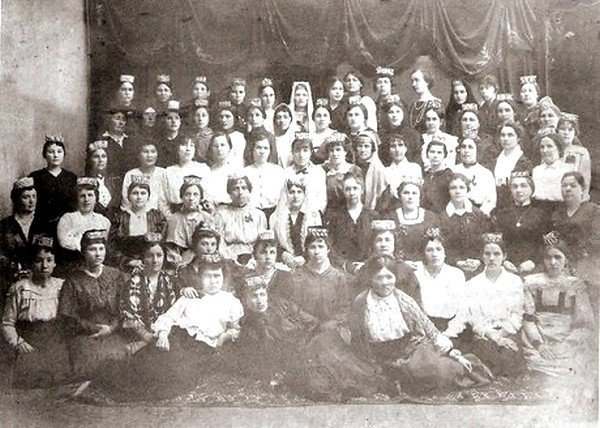is nearing an end and he's more than ready to board a
ferry at Omsk and travel down the Irtysh River to the
Altay Mountains.
For a great book on the building of the Trans-Siberian
Railway TNT recommends "To The Great Ocean" by
Harmon Tupper.//
This portion of the trip has Halim Sabit Efendi preparing to
ride on the newly-built Trans-Siberian Railway from
Chelyabinsk to Omsk in 30 hours.
Our train departed Ufa and after following the "White Volga" river for
a bit, we started to advance into the Ural Mountains. In between the
mountains I could see prosperous-looking Russian villages and it made
me sad to think that our people (Moslem Turks) had not settled here
first.
In the morning, we came out of the mountains onto a flat plain and
forests. Although my ticket was all the way to Omsk, I decided to
spend a day in Chelyabinsk first. So I got off the train there and went
to visit a young imam I knew there. He was very up on the news from
Istanbul and asked me to explain the opposition in the new Assembly
(after the resumption of constitutional rule). He was optimistic about
Turkey's future but he could not comprehend how tragedies like the
fires in Istanbul's Mercan and Aksaray districts had been allowed to
occur.
After he showed me his schools we went to the mosque for Friday
prayers and then returned to his house, where we dove into a
discussion about women's 'hicab' and 'tesettür'. The imam said he had
read and liked a work he identified as "Tahrifülmurat", published in
Egypt, as well as "Ülmurat-ı Müslüme". I got the impression that he
was not in favor of 'hicab'. He asked me about opinions in Istanbul on
this subject.

The All-Russian Congress of Moslem Women in Kazan, 1917.
In response, I said that opinions in Istanbul varied from neighborhood
to neighborhood and that no firm opinion had been published yet. As
for my personal opinion, I told the imam that I was still in the process
of formulating one, although I felt that, based on Islamic law, the
'hicab' was more appropriate than the 'tesettür' for women covering
themselves, to include their faces. Ultimately, though, I felt it was up
to each congregation in the various localities to decide, mentioning
urban Arabs, Ottoman Turks, Bukharis and Indians, in this regard.
The imam listened carefully to my words and seemed to appreciate my
views. The time had now come for me to return to the station so I bid
him farewell. In an hour and a half the train would leave Chelyabinsk
for Petropavlovsk and Omsk. I was tiring of train travel, though, and
looked forward boarding a ferry on the Irtysh River and heading for
my ultimate destination. So, after another 30 hours or so on the train I
would reach the Irtysh.
//END of PART V//

Hiç yorum yok:
Yorum Gönder